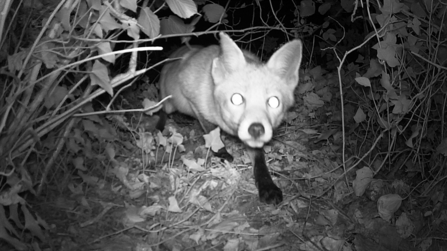My first attempt to get a photo of a badger, having battled through a hedge to set up the camera outside a large badger-shaped hole, actually revealed an entirely different animal. Foxes are extremely resourceful, happily finding refuge in forests, grasslands, mountains, and suburban areas, and they will often occupy abandoned badger burrows instead of going through the effort of digging their own. They are usually solitary hunters, although it is common to see them in groups of 3 or 4 adults, and they will feed on rabbits, birds, worms, insects, fruit, and – notoriously – garbage. Anyone living in the suburbs will almost certainly have had their rubbish pilfered through by a hungry fox or been awakened by the eerie scream of a vixen, but the rural foxes are much more elusive than their urban counterparts – possibly due to persecution from humans. I was able to capture quite a few foxes across the reserve, but their highly variable foraging habits made it very difficult to work out just how many individuals there were. Some were certainly pluckier than others, but they all seem to be sightly cautious around the camera, sniffing the air as they passed by or avoiding it entirely. Their group territories are said to typically be 270 hectares in rural areas so there is a chance that these foxes all belong to the same family.
Mammals of Coombe Bissett Down: Fox

Fox caught on trail cam - Oliver Davies
Mammals cannot see infrared light, but this photo shows clearly how the flash from the camera is reflected in the back of the fox’s eyes. Like cats and dogs, foxes possess a membrane called a tapetum lucidum, which improves their night vision by reflecting light passing through the retina back into the eye. This individual also has a distinctive nick in his ear so I am confident that I only caught him on camera once.
Fox dens provide a safe space to sleep, store food and raise their pups. Their burrows usually comprise multiple rooms with several exits, and they are regularly moved between by individuals of the same family. The fox’s large bushy tail provides additional warmth, but they are also used for balance and communication.

